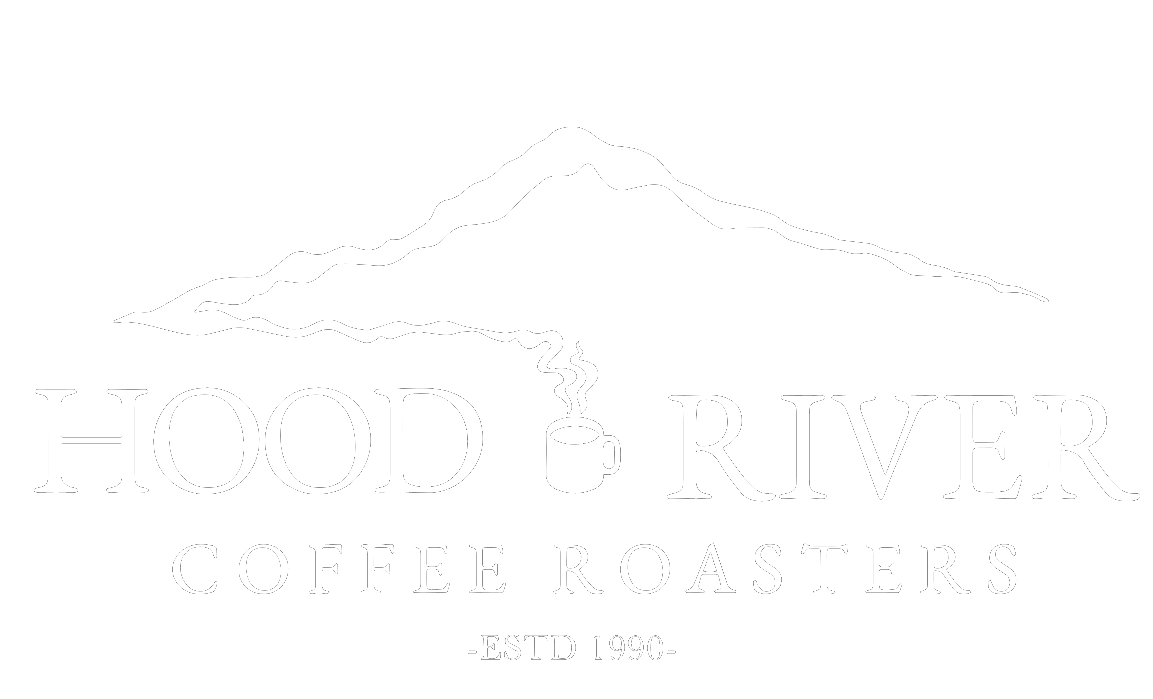The Brewing Guide
According to legend… ‘A ninth-century Ethiopian goatherder named Kaldi noticed his flock becoming frisky after eating bright red berries from a certain tree. Kaldi brought some of the berries to a local monastery, but the monk in charge disapproved and threw them into the fire. The aroma rising from the burning berries brought other monks out to investigate. The berries had split, revealing a bean inside. The curious monks raked the beans from the embers, ground them up and dissolved the powder in hot water, creating the world’s first cup of coffee.’
Brewing
Storing
Grinding
Amounts
Enjoy Immediately! Coffee should be consumed for enjoyment immediately after brewing. Air oxidizes the brew and changes the flavor profile acerbic soon after the initial process is complete. To get the best out of your coffee, brew only as much as will be consumed within 30 minutes of brewing.
Tasting
At Hood River Coffee Roasters, we are continuously cupping coffee in order to determine what our seasons choices will be and to make sure that our current offerings are of the same excellent and consistent quality as when we first contracted them.
Cupping is a method of systematically evaluating the aroma and taste of coffee beans. It is often used by growers, buyers, and roasters to assess the quality of a particular coffee sample. Proper cupping requires the adherence to an exacting set of brewing standards and a formal step-by-step evaluation process. A trained cupper generally looks at six characteristics:
- Fragrance – the smell of beans after grinding.
- Aroma – the smell of ground-up beans after being steeped in water.
- Taste – the flavor of the coffee.
- Nose – the vapors released by the coffee in the mouth.
- Aftertaste – the vapors and flavors that remain after swallowing.
- Body – the feel of the coffee in the mouth.
The location of the 5 basic taste sensations are Sweet, Salt, Sour, Bitter, and Savory. Within each of these basic sensations are other more complex primary and secondary sensations. It is through many years of experience and repeated cuppings that a cupper can properly evaluate subtle characteristics in the coffee.
Roasting
Many elements influence coffee roasting and the techniques used to control or adapt to the variations in these factors are as important as the quality of the coffee beans used. Differentials in weather, air pressure, air density and moisture affect coffee roaster efficiency, just like they affect the efficiency of an automobile or airplane engine. For example, higher altitude or humidity will require more roasting time to create the same coffee beans as a lower altitude, low humidity environment. Simplified, what this means is that applying certain mathematical formulas to roasting temperature and time, based on atmospheric conditions on any given day will give you consistently roasted, flavored coffee beans.
At HRCR we have charts of recipes and utilize computerized roaster settings to control the time and temperature of each individual roast, giving each coffee what we consider a consistently optimum roast. Our experienced roasters recognize the precise time to end each roast depending on the type of bean. They know to use the desired color and the amount of oil showing as indicators of the perfect roast.
The precise moment to end each roast depends on the type of bean. The desired color and the amount of oil showing are indicators. Because hot beans will continue to cook a little after they are dropped out of the roaster, the roaster anticipates this in the timing.
The roasting process ends in the perfect cup of single origin or blended coffee!

